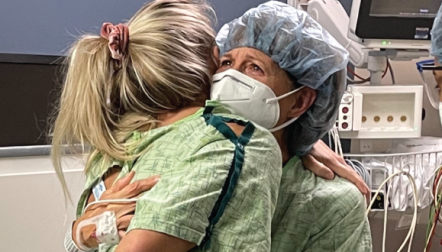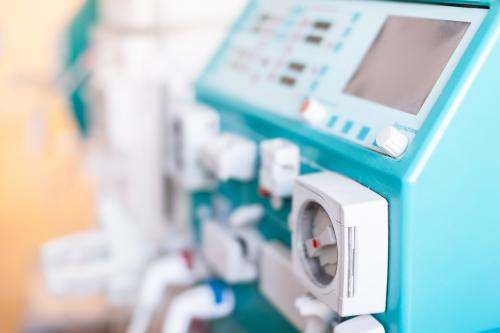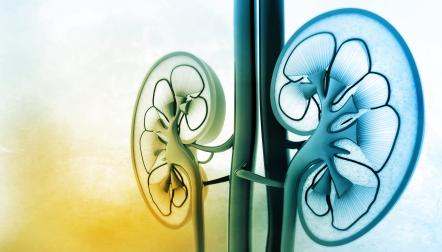
About vascular access

Jump to
What is a vascular access?

If your kidneys fail, you will need to start dialysis to do the job of your kidneys unless you receive a kidney transplant. Before you can start dialysis, a surgeon will need to create what is called a vascular access. A vascular access is where the dialysis machine will connect to your bloodstream.
During dialysis treatments, the dialysis machine cleans your blood then moves it back into your body. The three most common types of vascular access for hemodialysis are an artery vein fistula, an artery vein graft and a catheter.
Artery vein (AV) fistula
An artery vein fistula (AV fistula) is a connection between your artery and your vein that is created by a surgeon. This surgery creates a large blood vessel that has lots of blood flowing through it.
An AV fistula is usually located in your arm between your wrist and elbow. During dialysis treatments, the technician inserts needles into the AV fistula to get access to your bloodstream.
Artery vein (AV) graft
An artery vein graft (AV graft) is a soft rubbery tube that a surgeon implants (i.e., surgically places) into your arm. An AV graft is usually implanted in your arm but may also be implanted in your leg or chest. During dialysis treatments, the technician inserts needles into the tube to get access to your bloodstream.
Catheter
A catheter (or venous catheter) is a tube placed into a vein, usually in your neck or upper chest. Catheters are usually temporary and used only for a short time. For example, you may need a catheter if you need dialysis right away and the surgery to create an AV fistula or AV graft is still healing.
AV fistula and AV graft are used for permanent, long-term access to your bloodstream, and can last for years. AV fistulas and grafts are under your skin, so they are less likely to cause infections and blood clots than catheters.
Other types of vascular access devices
A HeRO (Hemodialysis Reliable Outflow) device is for people on dialysis who have problems with their AV fistula or AV graft. It allows more blood to flow in and out of the body compared to a catheter.
There are other types of vascular access, such as a PICC line or IV, that are not used for dialysis.
Which kind of vascular access is best?
AV fistulas are considered the best kind of vascular access because they:
- Are less likely to become infected compared to AV grafts and catheters
- Last longer than AV grafts and catheters because they have a lower chance of becoming blocked due to clotting
Why is it important to care for my vascular access?
If you are on dialysis, your vascular access allows you to get this lifesaving treatment. Taking care of your vascular access will keep it healthy and free of problems that can disrupt your dialysis treatments–such as infections or blood clots.
How should I take care of my vascular access?
Ask your dialysis care team or vascular access nurse (a specialist trained in vascular access care) to teach you how to take care of your vascular access. If you notice any signs of infection (such as redness or swelling) or any problems with your vascular access, contact your doctor, nurse or dialysis center right away.
Here are some tips to help you care for your vascular access:
Caring for your AV fistula or AV graft
To keep your AV fistula or graft working well:
Keep it clean at all times
- You may take showers only after your AV fistula or AV graft has completely healed.
- Wash your vascular access area gently with antibacterial soap and water every day.
- Wash your vascular access before every dialysis treatment–your dialysis center has washing stations with soap.
Check it every day
- Look for signs of infection, such as:
- Pain
- Redness
- Swelling
- Fever
- Flu-like symptoms
- If you have any of these symptoms, call your doctor right away.
Be careful with it
- Avoid putting pressure on your access area:
- Do not sleep or rest on your access area.
- Do not carry bags or heavy objects across your access area.
- Do not wear tight clothes or jewelry around your access area.
- Avoid scratching or scraping your access area.
Use your other arm for medical tests
- For routine blood tests, ask for your blood to be taken from your other arm (whichever arm does not have your vascular access in it).
- For blood pressure checks using a cuff, ask that the cuff be placed on your other arm.
Caring for your catheter
Your doctor will give you a prescription for supplies you willneed to care for your catheter. You can get these at a pharmacy or medical supply store. To care for your catheter:
Keep it clean, dry and covered
- Wash your hands before you touch any part of your catheter or your catheter incision (the area on your skin where the catheter goes into your body).
- Keep the area around the catheter incision clean at all timesusing a sponge and cleaning solution
- Keep the dressing over your catheter incision clean and dry and change it as often as your doctor tells you to, or if it gets wet, dirty or loose. Make sure you have plenty of dressing supplies at home in case you need to change it.
- Do not get the area around the catheter incision wet. Ask your nurse or doctor how to bathe with a catheter, such as using a special protective cover when you shower.
Take care of it
- Keep the clamps on your catheter tubes closed unless the catheter is being used.
- Flush (rinse out) the catheter as often as your doctor tells you to.
Check it every day
- Look for signs of infection, such as:
- Pain
- Redness
- Swelling
- Discharge (oozing) from the incision
- Fever
- If you have any of these symptoms, call your doctor right away.


